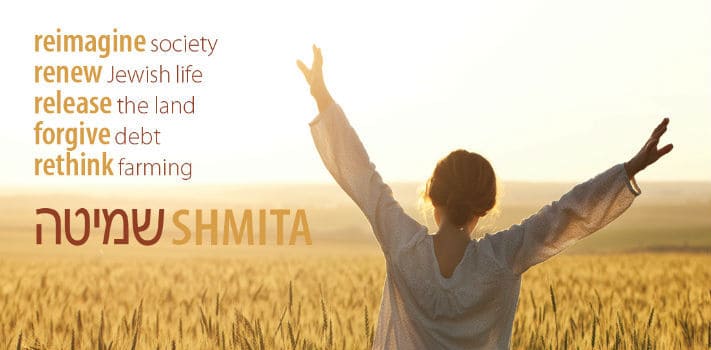For the next shmita year, the Shmita Project is relaunching as an open collaboration with dozens of partners from across the globe who, in a wide number of different ways, are raising awareness about shmita.
And we don’t simply want to raise awareness of shmita.
We also want to explore the ways that traditional teachings about shmita shed light on a significant range of contemporary issues, including rest and work, relationship to land, relationship to community, relationship to debt and debt relief, definitions of community, inequality, and the issue of consumption itself. Visit the newly developed Shmita Project webpage to find resources and programming from Hazon and our partners. We also launched the Shmita Prizes, a project to harness the power of the arts to explore the intersection of the shmita wisdom teachings with contemporary Jewish life, both in America and Israel in partnership with the Shalom Hartman Institute.
visit the shmita project website here
Reimagine society. Renew Jewish Life.
The goal of the Shmita Project is to significantly raise awareness of the concept of shmita in Jewish tradition, both as a way to learn about how extraordinary and rich Jewish tradition is, and to animate conversation and change in the world, based on the values and teachings of shmita and focus on environmental sustainability, rest and overwork, debt and debt relief, relationship to land, food and time, etc
What is Shmita?
Commonly translated as the ‘Sabbatical Year,’ shmita literally means ‘release.’ Of biblical origin, this is the final year of a shared calendar cycle, when land is left fallow, debts are forgiven, and a host of other agricultural and economic adjustments are made to ensure the maintenance of an equitable, just, and healthy society. The questions about how Shmita actually worked – if it actually worked – are enormous. The possibilities for social change are thrilling.
The current shmita year started Rosh Hashana 2021. The Shmita Project invites you to explore the following questions: What might this shmita year look like in a modern context? In Israel and beyond? And not just for farmers, but for businesses, for families, for communities, for each of us individually? How can we best prepare for it? And how might the wider shmita cycle hold the key to approaching the economic, environmental and societal challenges we are facing today?
Newest Article
Special Recent Posts
Shmita is here!
- Submit art/ideas about how to mark shmita to the Shmita Prizes
- Join the Shmita Project Facebook Group and the Google Group to connect with others who are exploring bring shmita into their lives and communities.
- Read weekly insights about shmita and the parashah (weekly Torah portion) from across the Jewish and non-Jewish community.
- Share about shmita with your community with this pamphlet.
- Learn about how Adamah is observing Shmita on our farm in Connecticut.
We hope this website will provide you an opportunity both to deepen your learning about Shmita, as well as support your own process to renew the Shmita tradition today.
For more resources, blog posts, and events, visit www.shmitaproject.org.





